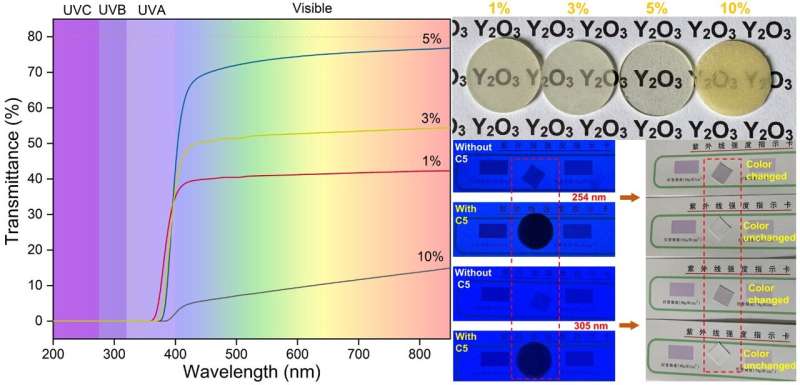
Ultraviolet (UV) radiation can break most of the chemical bonds in organic matter, and prolonged exposure to ultraviolet light can cause significant harm to humans and objects. In response, UV-shielding materials have been developed to fulfill various commercial requirements, including UV-shielding windows, food containers, contact lenses, and masks.
While existing UV shielding materials are suitable for daily use, their effectiveness diminishes in high-temperature, high-pressure, corrosive, and radioactive environments. Organics fail at high temperatures, and films or coatings tend to flake under harsh conditions; glass is constrained by its inherent mechanical brittleness.
In response, researchers are actively engaged in the development of UV-shielding materials with high melting points, robust mechanical strength, optimal optical properties, and long-term physical and chemical stability to withstand diverse extreme conditions, including aerospace, high temperature, and acidic and alkaline environments.
To address these problems, a research team from Sichuan University has developed a new UV-shielding material: Ce-doped yttria transparent ceramic. Transparent ceramics are polycrystalline materials with optical transparency that are formed by pressing and sintering.
In contrast to traditional UV-shielding materials such as resin and glass, transparent ceramics typically exhibit superior chemical stability and enhanced thermomechanical properties, including thermal-shock resistance, toughness, strength, and thermal conductivity. They subjected cerium dioxide and yttria raw materials to a series of preparation processes to obtain Ce-doped yttria transparent ceramic.
Cerium dioxide serves not only as a UV absorber but also as an effective sintering aid for yttria transparent ceramics. Due to the absorption in the visible region of tetravalent cerium, the UV cutoff edge of the yttria ceramic shifted from 250 nm to 375 nm. This shift grants UV shielding capabilities to yttria transparent ceramics, resulting in 100% shielding for UVC and UVB and approximately 95% shielding for UVA.
The team published their work in Journal of Advanced Ceramics on July 24, 2024.
Their results indicate that Ce-doped yttria transparent ceramics exhibit excellent mechanical and thermal properties. Additionally, the optical quality of Ce-doped yttria transparent ceramics remains stable even after prolonged exposure to harsh environments, including acidic and alkaline conditions, UV radiation, and high temperatures.
Compared to traditional UV-shielding materials such as coatings, films, polymers, and glass, these UV-shielding transparent ceramics offer superior stability and longevity. Consequently, Ce-doped yttria transparent ceramics are highly competitive as UV-shielding materials, particularly in extreme conditions such as space, radiation reactors, and high-temperature environments.
More information:
Cong Zhang et al, Designing highly transparent cerium doped Y 2O 3 ceramics with high mechanical and thermal properties for UV-shielding in extreme conditions, Journal of Advanced Ceramics (2024). DOI: 10.26599/JAC.2024.9220917
Provided by
Tsinghua University Press
Citation:
Ce-doped yttria transparent ceramic: A new ultraviolet-shielding material for extreme conditions (2024, July 30)
retrieved 30 July 2024
from https://phys.org/news/2024-07-ce-doped-yttria-transparent-ceramic.html
This document is subject to copyright. Apart from any fair dealing for the purpose of private study or research, no
part may be reproduced without the written permission. The content is provided for information purposes only.
